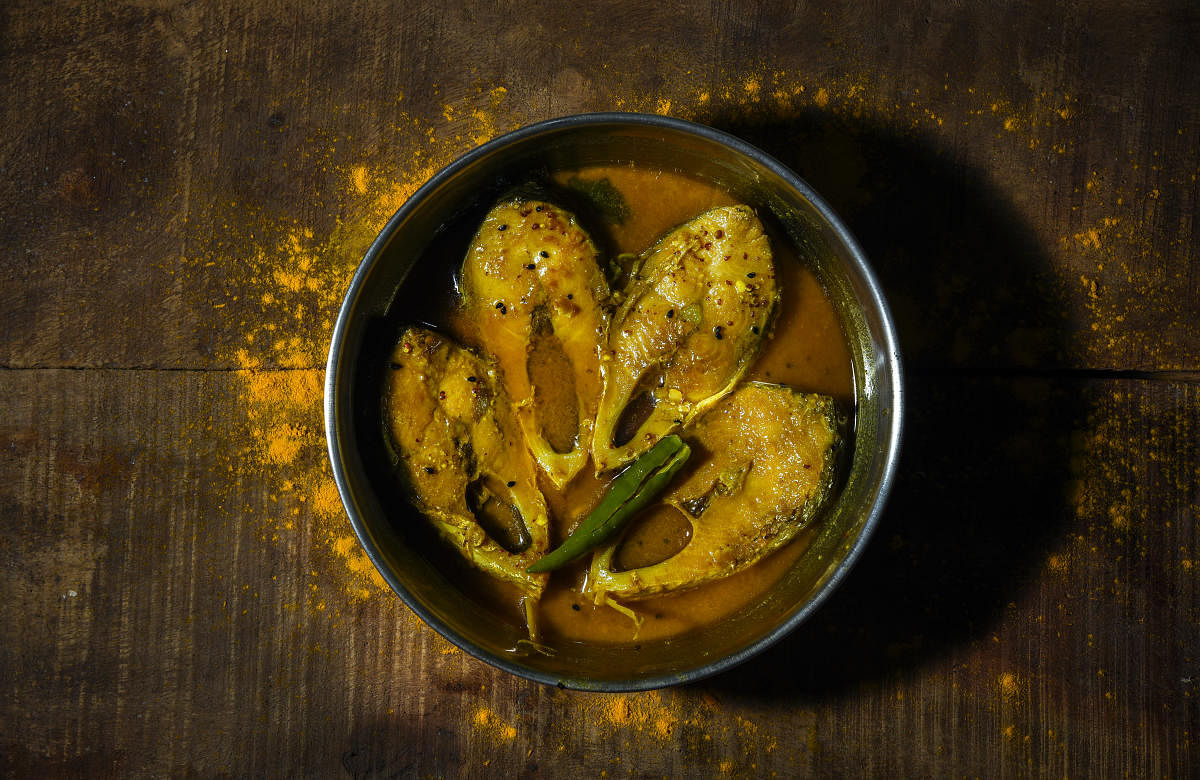
As dark clouds gather overhead with the promise of respite from what has been a sweltering Kolkata summer, the heart breaks into a song louder than the Jacobin cuckoo’s mellifluous call, a bird I’ve come to associate with the monsoon in this city, now my home for over two decades. The season also takes me back to those early days of my marriage, when I observed another monsoon ritual extremely close to the Bengali’s heart, or should I say — stomach.
Ilish! Many of us are familiar with this fish-loving community’s obsession with this variety of herring. But beyond West Bengal, ilish better known as hilsa, doesn’t have as wide a fan base which is why coming from McCluskiegunj, in Jharkhand, my first introduction to ilish happened when I moved to Kolkata for my further education. As a paying guest with a Bengali family, the landlady had served me a sliver of fish, with so fine bones, it was impossible for me to pick. Blissfully oblivious of its royal stature, when I requested her never to give me that fish again, the aghast expression on her face I only understood years later, after I married into a Bengali family.
The boneless alternative served these days at restaurants is meant for non-Bengalis like us, who aren’t adept at picking bones, but, in the early days of my marriage, when the city was still Calcutta, and everything was authentic, ilish too had all its bones. I remember one monsoon morning I found my in-laws gathered in the kitchen, excitedly prodding a large silver-coloured fish displayed on the kitchen counter. Listening to them rave about all the effort it had taken to ascertain the perfect, fresh ilish came home; I imagined it would have been easier to take a trip to the Padma river in Bangladesh, the chief source of ilish, and catch one personally.
Needless to say, the rest of the day was devoted to the ilish. Being the newest member in the family, I was given a complete low-down on its cultural significance, from a pair of ilish offered to goddess Lakshmi during Lakshmi and Sarswati puja, to it being the star of the menu on most auspicious occasions like Jamai Shoshti or Pohela Boishakh. Then, the happening hilsa festivals now held across the state, hadn’t been conceived. After noting down the tricky procedure of ilish macher paturi (steamed fish with spices wrapped in tender banana leaf), I felt quite confident of my success at the lunchtime challenge.
But the moment mom-in-law served me two succulent pieces of bhapa shorshe bata ilish, I could feel my face turn a shade of the pale-yellow mustard paste the fish had been steamed in. Noticing my discomfort, she’d placed a hand on my shoulder and rather nonchalantly assured me that there was Silicea in the house, a homeopathic medicine used to dissolve fish bones, if one happened to get lodged in the throat. I’m not sure whether it was mom-in-law’s gentle touch or the medicine tactic that put me at ease.
After a laborious hour or more, when I proudly displayed the bones on the side of my dish, the family burst out laughing and I realised their plates had not a trace left of the fish.
And despite the years that I’ve lived in this city, imbibing its many ways, from waking up with a smile on my face to the rhythm of the dhak during Durga puja, to relishing shukto, the traditional bitter dish served as a starter at lunchtime, I still have a bone to pick with the incredible ilish.